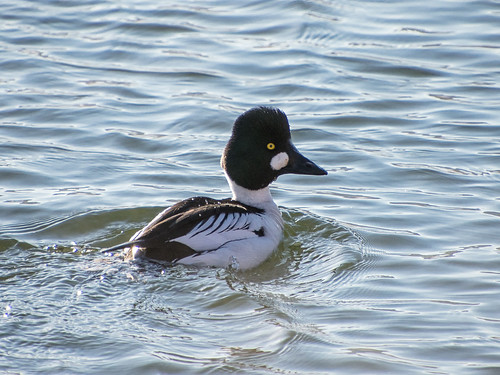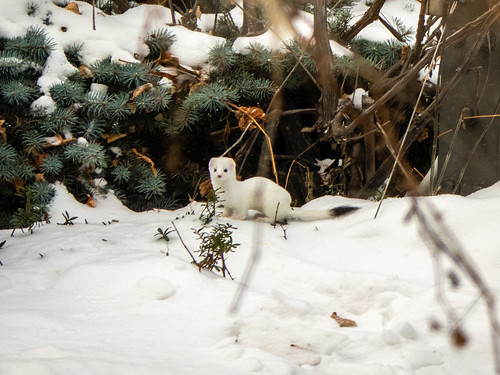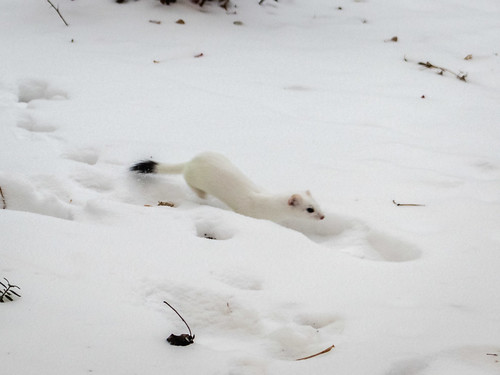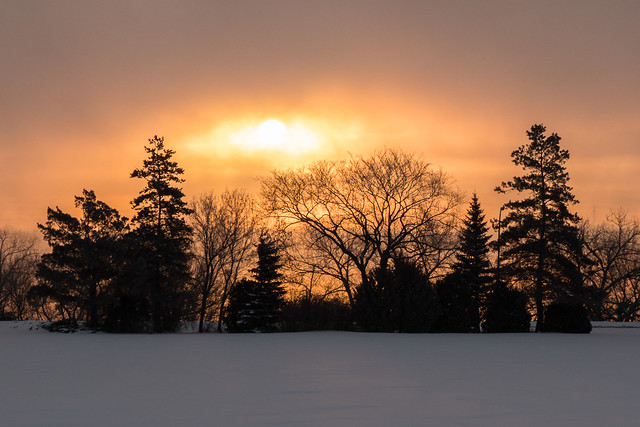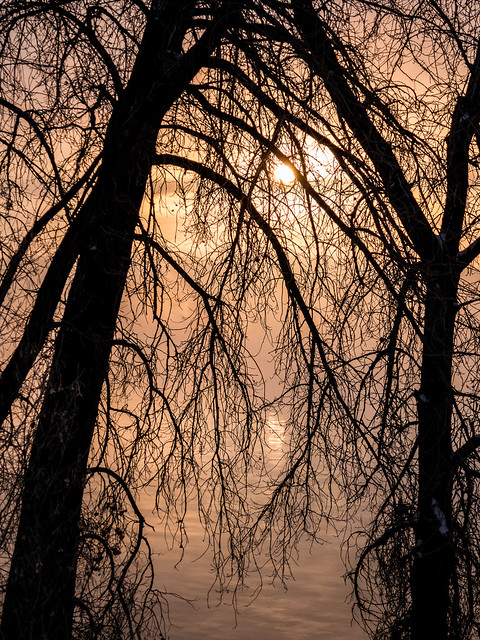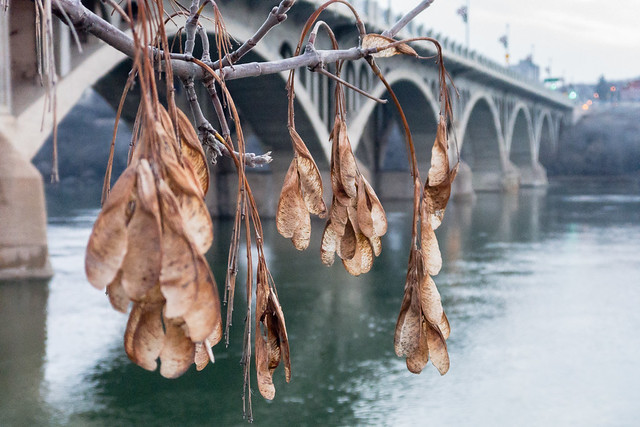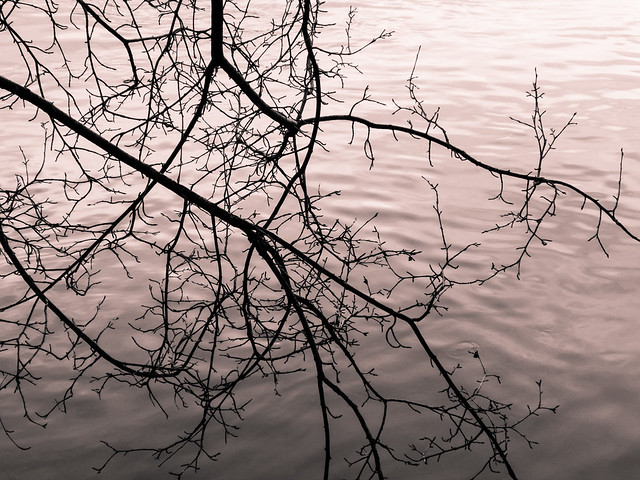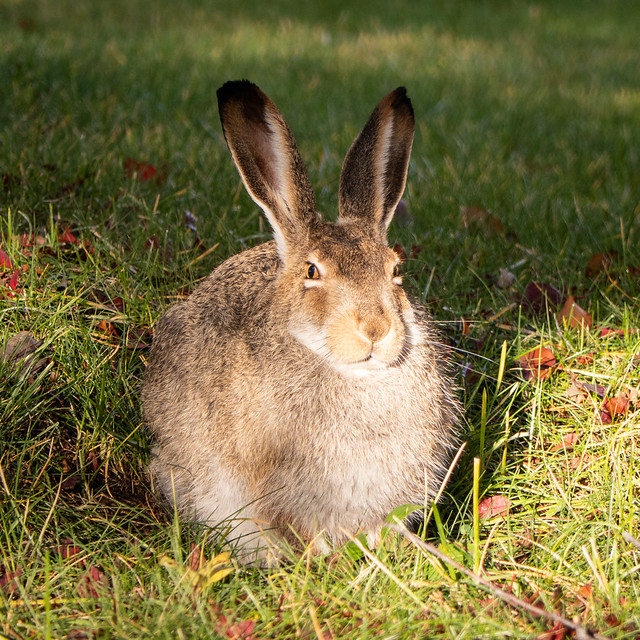Tuesday, 27 November 2018
EcoSask News, November 27, 2018
Upcoming Events
Permaculture Regina, Nov. 27 (Regina)
The Permaculture Regina board is meeting tonight at 6 pm at 2138 McIntyre Street (use side door). Everyone welcome - bring your ideas and enthusiasm.
Gardiner Dam Birding, Dec. 1 (Saskatoon)
Join Saskatoon Nature Society on a birding trip to Gardiner Dam from 9 am-5 pm, Dec. 1.
Storytime at the Zoo, Dec. 4, 5, 11, 12 (Saskatoon)
Enjoy a story in the company of an animal at the Saskatoon Forestry Farm Park & Zoo from 1:30-2:30 pm, Dec. 4, 5, 11, & 12.
Lakeview Community Climate Conversation, Dec. 4 (Regina)
Jared Clarke’s grade 6-7 class is hosting the second Lakeview Community Climate Conversation at 6:30 pm, Dec. 4, in the Lakeview School gymnasium. They’ll be showing An Inconvenient Sequel: Truth to Power.
Check out this video where the students share the importance of solar power to Saskatchewan.
Enviro Collective Regina, Dec. 5 (Regina)
The Regina Enviro Collective will be meeting at 7 pm, Dec. 5, at the Artesian.
Outdoor Educator Social, Dec. 5 (Saskatoon)
SaskOutdoors invites all outdoor educators to a social from 3:30-7 pm, Dec. 5, in Saskatoon.
Energy Efficiency Alberta, Dec. 5 (Saskatoon)
Peter Love will discuss Energy Efficiency Alberta at the Dec. 5 breakfast meeting of SK Energy Management Task Force.
Winter Commuter Cycling Workshop, Dec. 6 (Regina)
Bike Regina is hosting a winter cycling discussion at 7 pm, Dec. 6.
Climate Alarm March, Dec. 8
Citizens for Climate are inviting communities around the world to join with people in France in holding a climate alarm march on Dec. 8 to to encourage COP24 world representatives to adopt important measures limiting global warming.
A full list of upcoming events can be found on the EcoFriendly Sask Calendar
Art & Nature
Artist Gerald Beaulieu's road-killed crows are too large to ignore - they say what most roadkill never get the chance to say - notice me.
An exhibit of 3 centuries of American art at Princeton University uncovers relationships between art, nature, politics, slavery, national parks, and more.
In the News
Saskatchewan lakes and dugouts act as carbon sinks - one more reason to stop draining our farmlands
Birds of Saskatchewan is available for pre-order. Order your copy now.
A useful overview of the history of Alberta's oil industry. If it's in trouble now, it's because of past choices. Should government intervene now when companies rejected intervention in the past?
Pedestrianized streets are kid-friendly - and everyone benefits.
What makes a transit system great? An excerpt from Trains, Buses, People: An Opinionated Atlas of US Transit by Christof Spieler.
EcoSask News is a weekly round-up of local news and events. Email us if you have items you would like us to include.
You can follow EcoFriendly Sask by liking us on Facebook, following us on Twitter, or by email (top right corner).
Labels:
Activism,
Art,
Birds,
Books,
Children,
Cycling,
Education,
Energy,
Oil,
Pedestrians,
Permaculture,
Regina,
Saskatchewan,
Saskatoon,
Schools,
Solar,
Transportation,
Water
Tuesday, 20 November 2018
EcoSask News, November 20, 2018
Upcoming Events
Why We Should Listen to the Plants, Nov. 20 (Saskatoon)
Dr. Prakash Venglat will discuss what we can learn from plants about stress, adaptability, and thriving in new environments at the 7:30 pm, Nov. 20, meeting of Café Scientifique Saskatoon.
Human-Polar Bear Conflicts, Nov. 23 (Saskatoon)
There will be a presentation on Human-Polar Bear Conflicts at 3:30 pm, Nov. 23, as part of the WildEcol Seminar series.
Ferruginous Hawks, Nov. 24 (Fort Qu’Appelle)
Ryan Fisher will discuss ferruginous hawk research on the Prairies at the 7 pm, Nov. 24, meeting of the Fort Qu’Appelle Nature Society. Meetings are held at the Fort Qu’Appelle Train Station.
Species at Risk: Grasslands National Park, Nov. 26 (Val Marie)
Parks Canada ecologists will provide an update on species at risk in Grasslands National Park at 7 pm, Nov. 26, in Val Marie.
Greater Sage-Grouse Update, Nov. 27 (Glentworth)
Ministry of Environment will provide an update on their work with Greater Sage-Grouse at 7 pm, Nov. 27, in Glentworth.
Forestry Farm Park & Zoo, Nov. 27 (Saskatoon)
The City of Saskatoon is hosting an information session to share the new Master Plan for the Saskatoon Forestry Farm Park & Zoo at 7 pm, Nov. 27. The Plan will be available online effective Nov. 28.
DIY Green Cleaners, Nov. 27 (Regina)
Learn how to eliminate toxins from your home and create natural cleaning products from 7-8:30 pm, Nov. 27, at the Sunrise Branch, Regina Public Library.
Storytime at the Zoo, Nov. 27/28 (Saskatoon)
Enjoy a story in the company of an animal at the Saskatoon Forestry Farm Park & Zoo from 1:30-2:30 pm, Nov. 27 & 28.
Sea of Life, Nov. 28 (Regina)
Sea of Life, a visit to the world’s oceans, will be screened at 6:30 pm, Nov. 28, in Regina.
Sharp-tailed Grouse, Nov. 29 (webinar)
Brandon Burda will discuss Sharp-tailed Grouse: Tools for Managing in a Changing Environment in a noon-hour webinar hosted by SK PCAP on Nov. 29.
Christmas in Who-scana-ville, Dec. 1 (Regina)
Wascana Centre is hosting an outdoor nature program for kids from 12-3 pm, Dec. 1.
Looking Ahead
Climate Alarm March, Dec. 8
Citizens for Climate are inviting communities around the world to join with people in France in holding a climate alarm march on Dec. 8 to to encourage world representatives during the COP24 to make serious commitments to adopt important measures limiting global warming.
A full list of upcoming events can be found on the EcoFriendly Sask Calendar
In the News
Kristen Martin and Jared Clarke are fighting climate change with conviction and native grasses.
The City of Regina set a new record this year by collecting over 800 tonnes of leaf and yard waste. Due to increased volumes, they’ll be replacing current depots with a single site open from April-November with additional operating days.
Congratulations to Max Abraham on receiving the Meewasin Conservation Award 2018.
Saskatoon’s Northeast Swale Watchers are sharing information from panelists who presented at their last event – MORE Than an Urban Park on their Facebook page.
How will Saskatoon’s George Genereux Urban Regional Park be affected by development plans for the surrounding area?
The plastic backlash - what’s behind our sudden rage and will it make a difference?
Pathways to zero-energy buildings need to focus on energy efficiency as well as renewable energy options such as solar.
Both parks and cemeteries support bird diversity. More trees and a larger site contribute to greater species richness.
Conflicting priorities - grand old trees vs affordable housing.
World Climate Simulation game players come away with a strong desire to learn and do more about climate change.
EcoSask News is a weekly round-up of local news and events. Email us if you have items you would like us to include.
You can follow EcoFriendly Sask by liking us on Facebook, following us on Twitter, or by email (top right corner).
Labels:
Advocacy,
Awards,
Birds,
Children,
Construction,
Films,
Games,
Invasive Plants,
Parks,
Plants,
Trees,
University,
Waste,
Wildlife
Sunday, 18 November 2018
Alternate Voices: Reconnecting Humans with Nature
It’s easy to get caught up in the mainstream flow of media, but there are alternate voices. Here are just a few that we enjoy reading. Let us know what you read when exploring the connections between humans and nature.
Beside
Beside magazine out of Montreal prides itself on “bridging the gap between humans and nature.” The magazine is printed on 100% post-consumer recycled paper produced at a Quebec mill that runs on biogas, purifies the water it uses, and ships its waste to nearby farms to feed the soil. Printing and distribution are also as environmentally friendly as possible.
The articles range from invisible roads and wildlife crossings to raptors, technology, and back-to-basics living. The most recent issue, released November 15, explores the ways in which we are building our future with nature. You can purchase a paper copy, sign up for a monthly email newsletter, or receive some of their articles via RSS feed. There’s also a quarterly dispatch of audio stories.
Earth Island Journal
Earth Island Journal’s goal is to “highlight the subtle but profound connections between the environment and other contemporary issues.” As the media arm of the Earth Island Institute, their goal is to “make a passionate argument for defending Earth.” Their most recent issue includes articles on noise pollution in the wild, breaking down the barriers (women climate scientists, queering the environmental movement), and dogs that are sniffing out killer whale scats. The Journal is a quarterly paper publication. Many articles are available on their website.
New Nature
New Nature is a digital youth nature magazine out of the UK. It’s written, edited, and produced entirely by young people under 30. The current issue includes articles on social media as a resource for ecological research, sundews, shrews, and prescriptions for nature. You can subscribe to or download the magazine from their website.
Orion
Orion is an American magazine exploring the connection between nature and culture. The current issue includes articles on climate adaptation and new ways of thinking about medicine, witnessing a solar eclipse, and a piece by Wendell Berry. Paper and digital subscriptions are available and some articles are available online.
Resurgence & Ecologist
Resurgence & Ecologist is a British magazine offering “positive perspectives on a range of engaging topics covering ecology, social justice, philosophy, spirituality, sustainable development and the arts.” The current issue includes articles on hope despite extinction and deforestation, a rewilding project in the Netherlands, and tips on how to minimize waste in the holiday season. Subscribers have access to articles online as well as PDF and paper versions of the magazine as a whole.
The Ecological Citizen
The Ecological Citizen is a digital, peer-reviewed ecocentric journal “confronting human supremacy in defence of the earth.” Recent articles discuss humans’ relationship with the biosphere, dying ecologically, and a critique by George Monbiot of the belief that everything has a price.
You May Also Enjoy
Alternatives Journal - Alternatives Journal says its mandate is to “promote an understanding of ‘environment’ in the broadest sense of the word, including social and political dimensions, and stimulate dialogue about environmental issues”
Anthropocene - Anthropocene is a print and digital publication explores “how we can create a sustainable human age we actually want to live in”
Ensia - Ensia is a “a solutions-focused nonprofit media outlet reporting on our changing planet” and motivating people to create a more sustainable future
The Narwhal - The Narwhal is a digital publication by a team of investigative journalists dispelling myths about Canada’s natural environment
The Nature of Cities - The Nature of Cities is an international platform for discussing ideas about “cities as ecosystems of people, nature, and infrastructure”
Tuesday, 13 November 2018
EcoSask News, November 13, 2018
Upcoming Events
Smarter Science, Better Buildings, Nov. 13-16 (Prince Albert)
Grade 7 students and the general public are invited to view the Smarter Science, Better Buildings exhibit in the foyer of Prince Albert’s City Hall from Nov. 13-16.
East Africa Trip, Nov. 19 (Regina)
Dale Hjertaas will present on his recent trip to East Africa at the 7:30 pm, Nov. 19, meeting of Nature Regina.
Hidden Bird Song, Nov. 20 (Prince Albert)
Join Nature Prince Albert for a talk on bird song from 7-9 pm, Nov. 20.
Man of the Trees Book Launch, Nov. 20 (Saskatoon)
Join Paul Hanley at McNally Robinson Booksellers at 7 pm, Nov. 20, for the launch of his new book, Man of the Trees: Richard St. Barbe Baker, The First Global Conservationist.
Indigenous Green Energy Forum, Nov. 21 (Saskatoon)
First Nations Power Authority is hosting the 4th annual Indigenous Green Energy Forum from 8 am-4 pm, Nov. 21, in Saskatoon.
Trash Talk, Nov. 22 (Saskatoon)
You’re invited to attend a waste reduction workshop offering tips and tricks on how to reduce your waste footprint from 6:30-9:30 pm, Nov. 22.
Saskatoon Cycles AGM, Nov. 23 (Saskatoon)
Saskatoon Cycles is holding their annual general meeting at 5 pm, Nov. 23, at Venice House on Central Avenue.
EcoHack, Nov. 23-25 (Saskatoon)
Participate in EcoHack, Nov. 23-25 at the U of S, and help solve local environmental and sustainability challenges.
Carbonless Concert, Nov. 24 (Saskatoon)
Enjoy local music at a carbonless concert from 6:30-9 pm, Nov. 24.
A full list of upcoming events can be found on the EcoFriendly Sask Calendar
In the News
Minneapolis is stepping up enforcement of sidewalk snow removal to increase walkability.
Our wilderness areas are often noisy places.
“Those of us who study insects are passionate about them in a way that can seem incomprehensible to outsiders. People get why Jane Goodall loves chimps; they are less sanguine about my fondness for earwigs.”
Owls, hares, and butterflies - three great new nature reference guides.
EcoSask News is a weekly round-up of local news and events. Email us if you have items you would like us to include.
You can follow EcoFriendly Sask by liking us on Facebook, following us on Twitter, or by email (top right corner).
Tuesday, 6 November 2018
EcoSask News, November 6, 2018
Upcoming Events
Wildlife Disease Ecology, Nov. 9 (Saskatoon)
The WildEcol seminar series is held at 3:30 pm, every other Friday, on the U of S campus:
Nov. 9 – Wildlife disease ecology
Decorate a Tree, Nov. 14 (Moose Jaw)
Decorate a tree for birds and wildlife at the 6:30 pm, Nov. 14, meeting of the Moose Jaw Nature Society.
Regina Beach Enviro Collective, Nov. 14 (Regina Beach)
The Regina Beach Enviro Collective will be holding their first meeting at 7:30 pm, Nov. 14, at Regina Beach.
Bat Migration, Nov. 15 (webinar)
Erin Swerdfeger will discuss bat landscape use during migration in Saskatchewan in a noon-hour webinar hosted by SK PCAP on Nov. 15.
SK Breeding Bird Atlas, Nov. 15 (Saskatoon)
Kiel Drake will update the Saskatoon Nature Society on the SK Breeding Bird Atlas at 7:30 pm, Nov. 15.
Sustainability on Campus, Nov. 16 (Saskatoon)
Join the U of S Office of Sustainability from 12-1 pm or over a pint at 5 pm, every third Friday of the month.
Repair Café Prince Albert, Nov. 17 (Prince Albert)
Share and learn skills to repair things at Repair Café Prince Albert from 1-4 pm, Nov. 17.
Household Hazardous Waste Day (Saskatoon)
You can dispose of household hazardous waste in Saskatoon from 8 am – 2:30 pm, Nov. 17.
Saskatoon Nature Society Field Trips
Nov. 11, 1-5 pm, Pike Lake Birding
Nov. 25, 2-3 pm, Pre-Grey Cup Birding, President Murray Park
Everyone is welcome. Check the Saskatoon Nature Society’s website for full details and updated information.
A full list of upcoming events can be found on the EcoFriendly Sask Calendar
In the News
The Saskatoon Nature Society is accepting applications by December 31, 2018, for the Kids in Nature grant. Additional information is available online.
Join an Enviro Collective group in Saskatchewan. “It’s a group of people who meet. Like a 'book' club, we’ll eat, drink and socialize but while we are hanging out, we’ll also be engaging in meaningful discussions about how we can take individual and collective steps to live more environmentally friendly lives. What’s potentially different about this environmental initiative is that we’re going to make it fun. And by getting together as a collective, we might feel more inspired than by simply acting on our own.”
The Canadian Network for Environmental Education and Communication is inviting proposals for presentations, workshops, or posters on Action on Climate Change through Education for the May 10-12 conference in Saskatoon. The deadline is January 15.
The Richard St. Barbe Baker Afforestation Area advises drivers to slow down and look out for deer on Valley Road and Cedar Villa Road.
Churchill Community High School hosted the 2nd Northern Saskatchewan Eco Conference Oct. 26-27.
“The loss of biodiversity is a silent killer” - stop biodiversity loss or we could face our own extinction.
11 wildly coloured moths to brighten your day.
EcoSask News is a weekly round-up of local news and events. Email us if you have items you would like us to include.
You can follow EcoFriendly Sask by liking us on Facebook, following us on Twitter, or by email (top right corner).
Labels:
Advocacy,
Bats,
Biodiversity,
Birds,
Children,
Conferences,
Grants,
Prince Albert,
Regina,
Repair,
Saskatoon,
Schools,
Transportation,
University,
Waste,
Wildlife
Sunday, 4 November 2018
Nature is All Around Us: Defining & Promoting Urban Natural Areas
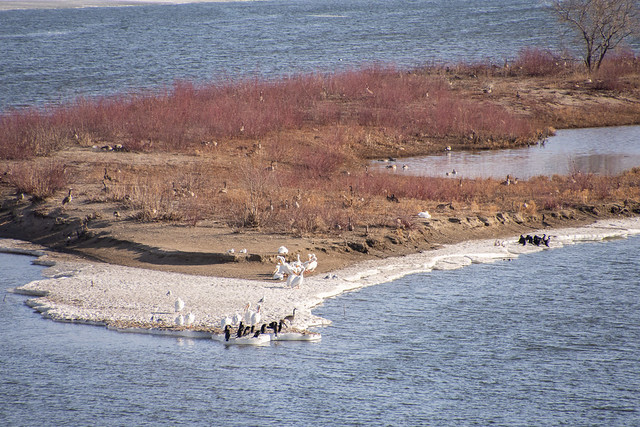 |
| Island bird life, Saskatoon |
We don’t need to go to Cypress Hills or Waskesiu to experience nature. We don’t even need to be in a park. In our towns and cities, nature is all around us – in our backyards, vacant lots, and railway rights of way as well as our riverbanks and parks.
As part of the development of a Green Strategy, the City of Saskatoon held meetings with interested locals on October 29, 2018, to obtain input into draft Natural Areas Standards and an Urban Forestry Management Plan. It was an interesting process and raised a number of questions that merit further discussion and are relevant no matter where you live.
What is a Natural Area?
Saskatoon’s Green Strategy states that the City “will strive to ensure all residents have access to a network of high quality, multifunctional, seamlessly integrated green spaces.” The Strategy then sets out a number of ways in which the City will work to achieve this goal. The majority of the strategies are focused on human interests, but they do include conserving “biodiversity through the identification and conservation of natural areas and by increasing their interconnections.”
Workshop participants pointed out a number of gaps in the current map of Saskatoon’s natural areas. These include (but are not limited to):
- Omission of the river;
- Failure to recognize the important wildlife habitat provided by areas such as cemeteries;
- Omission of wildlife corridors, such as the river valley and railway rights of way;
- Need to incorporate light pollution mitigation strategies and dark sky areas into natural areas standards;
- Fragmentation of natural areas (Saskatoon’s Northeast Swale has been divided into a recreational zone and a core ecological zone) and failure to provide a connection to the river for animals such as deer;
- Inclusion of dog parks, which damage plants and grasses and preclude wildlife habitat; and
- Need to respect the integrity of the ecosystem as a whole by establishing connectivity between natural areas both within and without the city.
- Need for cities to take ownership beyond their formal boundaries (New York City is taking responsibility for maintaining the quality of its watershed);
- Need to provide leadership by offering incentives and regulations for commercial green infrastructure (e.g. green roofs, permeable parking lots);
- Need for a comprehensive strategy: Do we prioritize areas with species at risk? Do we prioritize areas of abundance? Do we protect areas that are no longer wholly natural or do we eliminate them from further consideration because there has been some degradation or they were used for farming in the past? Do we simply maintain and protect or do we attempt to restore?
- Need to recognize that some areas have important ecological value in some seasons or some years but not necessarily all the time (migration staging areas change from year to year, wetlands may only be wet on a seasonal basis);
- Need to identify the requirements of different species. Insects and deer, for example, require different amounts of space and use the land very differently; and
- Need to design parks that help people “understand, appreciate, and stand up for nature, rather than thinking of parks as simply playgrounds.”
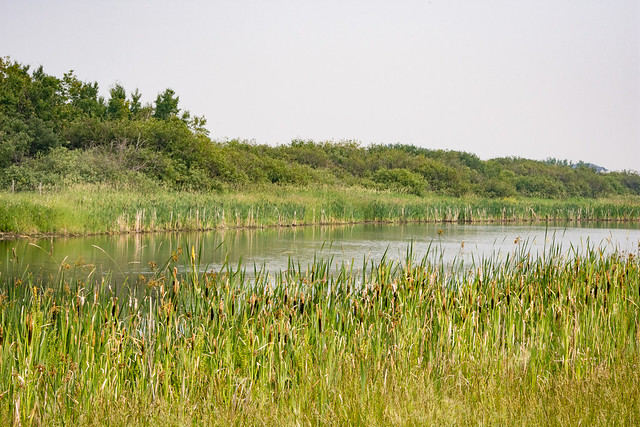 |
| Hyde Park, Saskatoon |
Saskatoon is developing an Urban Forest Management Plan and has identified different categories of trees. Remnant aspen stands and original forested areas are particularly important. It would be interesting to map food forests and analyze their role in ensuring food security. Dead trees play an important role as wildlife habitat and need to be maintained rather than being viewed as messy or potentially dangerous.
Trees have a value far beyond their replacement cost. They provide shade and shelter, wildlife habitat, beauty, and tranquillity. Neighbourhood trees have social and cultural value, forming part of our sense of place and belonging. Discussions around when trees should be maintained, when it’s okay to remove them, and how to compensate for their loss need to consider all these factors. This is particularly difficult when considering trees on private property and requires a designation scheme that takes into consideration heritage value, age and species, etc.
Nature Is All Around Us
Pinpointing natural areas on a map fails to recognize that nature is all around us. Wild animals need a suitable habitat, but that may not be “a remote wilderness or protected sanctuary; it must only have sufficient resources to attract and support a population.” There are 3 times as many endangered species in Australian cities than there are in the country’s rural areas.
Once we accept that we share our cities with other wildlife, we can begin to look at the best ways of cohabiting for mutual benefit. There will need to be educational programs (co-existing with coyotes), infrastructure upgrades (wildlife resistant garbage cans, non-reflective treatments for glass), and clear policies (rules of engagement).
An emerging field is biodiversity-sensitive urban design (BSUD) that contributes to biodiversity, building “nature into the urban fabric by linking urban planning and design to the basic needs and survival of native plants and animals.” BSUD is based on 5 principles: protect and create habitat, help species disperse, minimise anthropogenic threats, promote ecological processes, and encourage positive human-nature interactions. The principles can be applied to individual houses (e.g. green roofs, mix of native trees and plants, reduced building footprint, keeping cats indoors) and extends to neighbourhood design (wide boulevards, courtyard-focused buildings).
Subscribe to:
Posts (Atom)
